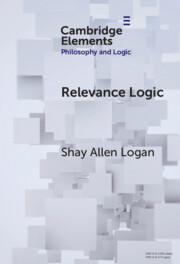Element contents
Relevance Logic
Published online by Cambridge University Press: 28 March 2024
Summary
- Type
- Element
- Information
- Series: Elements in Philosophy and LogicOnline ISBN: 9781009227773Publisher: Cambridge University PressPrint publication: 18 April 2024
References
- 11
- Cited by

